- Learning Information
- Introduction
- Preparation
- Materials/Tools
- Prior Knowledge
- Project
- Evaluation
- Support Materials
- Portfolio Pages
Learning Information
- ToL Learner Level:
- Intermediate
- Target Grade/Age Level:
- High School (Ages 15-18).
- Learning Objective(s). Learners will:
- Acquire knowledge about Drosophila melanogaster, specifically its classification, life cycle, and normal and mutant phenotypes.;
- Design and conduct an experiment to cross wild type flies and mutant flies (either a white-eyed or a vestigial wing mutant) and make qualitative and quantitative observations about the parent, F1 and F2 generations of flies and phenotypes and presumed genotypes based on those phenotypes.;
- Document the fruit fly experiments by creating ToL treehouse web pages.
- Type of Activity
- Classroom resource; Lab resource
- Science Subject / Key Words
- Genetics & Heredity;
- Methods, Techniques, Apparatus
- Additional Treehouse Type:
- Investigation
- Curricular Areas:
- Language Arts;
- Mathematics
- Language:
- English
- Teaching and Learning Strategy:
- Hands-on Learning;
- Technology Integration/Computer Assisted Instruction
- Grouping:
- Small Group instruction
Introduction
This page describes our experience guiding groups of students through the dual process of conducting a basic genetics experiment with Drosophila melanogaster and documenting the project by creating Treehouse web pages. View a collection of the final products of this project in the Study of Fruit Fly Genetics at City High School Portfolio Treehouse.
Throughout the time students were conducting experiments with the flies, I (Molly Renner, biology teacher) interspersed lectures and homework related to genetics, DNA structure, etc. Those sheets are not included in this page, as they focus on the genetics experiments conducted by students, and the process that they went through to complete the fly crosses and document their work on the Tree of Life. Students were introduced to wild-type Drosophila (red eyes, normal wings) and also to two types of mutant flies (white-eyed and vestigial wings). They chose a mutant and crossed that fly type with wild type flies to observe the results. Most students chose to do reciprocal crosses, crossing wild males with (for example) vestigial females in Vial 1 and then wild females with vestigial males in Vial 2. The Project section of this page describes our process for conducting and documenting these student experiments.
Preparation
Before beginning this activity, flies and supporting materials should be ordered from Carolina Biological Supply or another company that provides biological products for student use.
Physical Materials and Tools
- Flies and supporting materials from Carolina Biological Supply or another company
- Camera to capture images of flies and fly equipment
- Blank paper to draw fly phenotypes, etc.
- Computer (at least one per group) for construction of treehouse web pages
Prior Knowledge
Before or during the fruit-fly raising process, students should be familiarized with basic genetics vocabulary and practice making a 1-trait punnett square.
Project
Throughout this section, reference will be made to worksheets given to the students to guide them through the research process with their Drosophila melanogaster crosses. These sheets may be accessed by clicking on the link provided here or by scrolling down to "Support Materials" below, where they are stored in the order that we used them.
Introducing Drosophila melanogaster
Several weeks prior to the start of the unit, I (Molly) ordered the flies (wild type, vestigial wing mutant, and white-eye mutant) and their supplies from Carolina Biological supply. Shortly after they arrived, I gave the students their first introduction to the flies and asked them to make expansion vials so that we could increase the number of flies as instructed by the Carolina Drosophila manual.
 View InstructionsforDrosophilaMedium022706.doc
View InstructionsforDrosophilaMedium022706.doc
In addition to having students research basic information such as classification and life cycle from their textbook and the Drosophila manual, I also asked them to perform an initial assessment of their groups' strengths and weaknesses as well as their availability to come in before or after school to count flies when needed.
 View IntrotoDrosophiliamelanogaster022706.doc
View IntrotoDrosophiliamelanogaster022706.doc
 View DrosophilaGroupStrengthsWeaknesses022706.doc
View DrosophilaGroupStrengthsWeaknesses022706.doc
The final piece of introduction to Drosophila was a worksheet the students completed on fly phenotypes that familiarized them with genetic notation as well as the appearance of the wild-type and mutant flies.
Students were also asked to draw the various fly phenotypes.

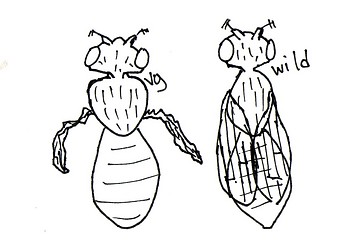
Vestigial wing vs. Wild Type © 2006 fivenavy1

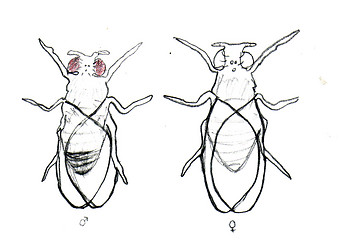
Red-Eyed (Wild Type) vs. White-Eyed © 2006 threeyellow3
Male or Female Flies?
In order to make sure students understood the genetic basis of sex as related to sex chromosomes, I asked them to answer some questions based on reading from their biology textbook as well as to take lecture notes as I spoke briefly about this topic.
I also wanted to make sure they had the more practical skill of telling male and female fruit flies apart, as this is critical for crossing the flies successfully. Students completed the worksheet below and also did a "practice run" for fly sexing, learning how to use the Fly Nap and then sorting the sleeping flies into male and female piles.
 View MaleandFemaleFruitFlies030606.doc
View MaleandFemaleFruitFlies030606.doc
Students were also asked to draw the difference between male and female flies. This was usually a drawing of fly abdomens copied from the Carolina Drosophila manual, but sometimes students got more creative.

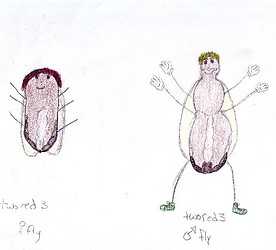
Female fly on the left, Male on the right © 2006 twored3
Introducing the Tree of Life
After students had been exposed to basic information about the flies, I, with Kathryn's help, introduced the Tree of Life website to students. Kathryn did a short presentation on the site and provided students with a paper to keep track of their username and password when they logged into the site. I had made colored folders for the students in each group to help them keep their fly materials together, so we used their class period and folder color to assign usernames in the ToL (for example, the 2nd period "Red" group would be twored and its members would be twored1, twored2, twored3, and twored4).
 View IntroductiontotheTreeofLifeNotesandInstruct031006.doc
View IntroductiontotheTreeofLifeNotesandInstruct031006.doc
Making the Crosses - Parent and F1 Generations
After an appropriate number of wild type, vestigial and white-eyed flies had grown to maturity, students performed their parent crosses.
| Wild Type Flies | Vestigial Wing Flies | White-Eyed Flies |
|
|
|
|
Before actually putting flies in vials, they completed this sheet so they would have a record of what they did.
Also in this time frame, I asked students to complete an initial self-check of their group folders to make sure each person had the appropriate worksheets completed.
 View FlyFolderIndividualWorkGradingCheck1.doc
View FlyFolderIndividualWorkGradingCheck1.doc
Approximately a week later, after the parent generation flies had grown to maturity, students made their F1 predictions (drawing punnett squares to illustrate their predictions if the trait of interest to them (vestigial wings or white eyes) was autosomal or sex-linked.
Providing More Guidance for Website Content
Kathryn developed a checklist for items to include in the Treehouse website. We ended up not using a few of the items (for example, an audio recording), adding a few things (the F1 Outcomes and Eulogies the students wrote for their flies) and changing others (a chi-square analysis became a percent-error calculation) but the checklist helped students stay on task when they were making their websites.
 View ChecklistContentforEachGroupsWebpage032006.doc
View ChecklistContentforEachGroupsWebpage032006.doc
Kathryn also conducted a short lesson with students, asking them to think about what makes a good website and giving them some instruction on how to format their sites.
Midpoint Group Reflection
Around this time, I also asked the student groups to assess themselves on how they were doing as a group. Students completed a 2-page assessment that asked them what was working in their groups, what was not working, and how they thought they could improve.
 View MidpointGroupReflection032006.doc
View MidpointGroupReflection032006.doc
Outcomes from the F1 Generation and Predicting F2
Students had spent a few days setting up their websites, but without the rest of the experiment, they wouldn't say much. Approximately one month after we started the fly experiments, students napped their F1 generation and observed their phenotypes.
(NOTE: This is a 13-second clip that takes about 2 mins to download on DSL)

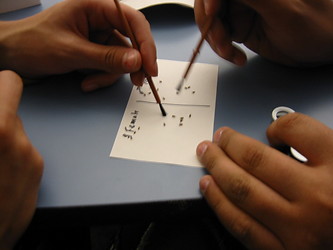
Sorting flies by sex and observing phenotypes© 2006
Students used this sheet as they made their observations to note the phenotypes and probably genotypes of their flies before crossing F1 males and females in two new vials to create the F2 generation.
A few days later, students made predictions about their F2 outcomes.
Self Checking Fly Folder Work
Several days after students made their F2 predictions, I asked them to go through their group folders and make sure each student had the proper worksheets completed.
 View FlyFolderIndividualWorkGradingCheck2.doc
View FlyFolderIndividualWorkGradingCheck2.doc
F2 Outcomes and Percent Error Calculations
Close to two months after starting the fly genetics unit, students had almost completed their experiments. Students napped and counted their F2 generation flies every other day for approximately 1.5 weeks (generally 3 to 4 distinct counting occasions). They kept track of how many flies of each phenotype they counted using this form.
Once they completed their counting, students used this form to calculate their percent error for each of their two vials and assess whether their initial hypothesis about their mutation (it was autosomal, it was sex-linked) was correct. They also completed several questions that led directly into the conclusions they drew on their group webpages.
 View ComparisonsPercentError042506.doc
View ComparisonsPercentError042506.doc
Completing the Tree of Life Website
Students spent 3 to 4 (50-minute) class periods finishing their websites. I helped them with ideas for what to include in the introduction and conclusion by providing them with these instructions:
 View SuggestionsforWebsiteIntroandConclusion042706.doc
View SuggestionsforWebsiteIntroandConclusion042706.doc
Final Notes
As some of my students were completing my biology course for Honors credit, I set up a set up a series of questions that students answered about the "Honors Fly Crosses" where flies with multiple mutations were crossed (for example, vestigial wing, white-eyed) and students had to make more complex predictions and do more fine-grained sorting of phenotypes.
 View HonorsFruitFlyQuestions.doc
View HonorsFruitFlyQuestions.doc
Near the end of the project, Kathryn set up a PowerPoint presentation to show parents and community members what students had been doing as part of the fruit fly genetics unit.
 View FruitFlyGeneticsPictures.ppt
View FruitFlyGeneticsPictures.ppt
Evaluation
I created a rubric that took into account whether students included all required sections in their page and paid particular attention to their introduction and conclusion to demonstrate their understanding of the project and what they had learned by the end of the experiment. I also awarded points to students who took time to format their web submission in a professional way. Please see the rubric under "Support Materials" below.
Support Materials
- Learner Section
- .
 Instructions
InstructionsforDrosophilaMedium022706.doc
Instructions
InstructionsforDrosophilaMedium022706.doc
 Worksheet
IntrotoDrosophiliamelanogaster022706.doc
Worksheet
IntrotoDrosophiliamelanogaster022706.doc
 Assessment
DrosophilaGroupStrengthsWeaknesses022706.doc
Assessment
DrosophilaGroupStrengthsWeaknesses022706.doc
 Worksheet
Phenotypes030206.doc
Worksheet
Phenotypes030206.doc
 Worksheet
SexChromosomes030306.doc
Worksheet
SexChromosomes030306.doc
 Worksheet
MaleandFemaleFruitFlies030606.doc
Worksheet
MaleandFemaleFruitFlies030606.doc
 Instructions
IntroductiontotheTreeofLifeNotesandInstruct031006.doc
Instructions
IntroductiontotheTreeofLifeNotesandInstruct031006.doc
 Worksheet
ParentCross031306.doc
Worksheet
ParentCross031306.doc
 Worksheet
F1Predictions032106.doc
Worksheet
F1Predictions032106.doc
 Worksheet
ChecklistContentforEachGroupsWebpage032006.doc
Worksheet
ChecklistContentforEachGroupsWebpage032006.doc
 Assessment
MidpointGroupReflection032006.doc
Assessment
MidpointGroupReflection032006.doc
 Worksheet
WEBSITEDESIGN032706.doc
Worksheet
WEBSITEDESIGN032706.doc
 Worksheet
F1Outcomes033106.doc
Worksheet
F1Outcomes033106.doc
 Worksheet
F2Predictions040306.doc
Worksheet
F2Predictions040306.doc
 Assessment
FlyFolderSelf-check040606.doc
Assessment
FlyFolderSelf-check040606.doc
 Worksheet
F2Outcomes041706.doc
Worksheet
F2Outcomes041706.doc
 Worksheet
ComparisonsPercentError042506.doc
Worksheet
ComparisonsPercentError042506.doc
 Instructions
SuggestionsforWebsiteIntroandConclusion042706.doc
Instructions
SuggestionsforWebsiteIntroandConclusion042706.doc
 Worksheet
HonorsFruitFlyQuestions.doc
Worksheet
HonorsFruitFlyQuestions.doc
 Assessment
FlyFolderIndividualWorkGradingCheck1.doc
Assessment
FlyFolderIndividualWorkGradingCheck1.doc
 Assessment
FlyFolderIndividualWorkGradingCheck2.doc
Assessment
FlyFolderIndividualWorkGradingCheck2.doc
 Rubric
GradingRubricforTOLFlyWebsites.doc
Rubric
GradingRubricforTOLFlyWebsites.doc
Portfolio Pages
- Fruit Fly Genetics at City High School
-
 © 2006 fruitflyyellow2
© 2006 fruitflyyellow2
- View the outcome of students' projects in their treehouse webpages! This portfolio treehouse contains links to students' investigations.
Information on the Internet
- Carolina Biological Supply Company Homepage This site provides ordering information for the "Genetics of Drosophila" experiment.

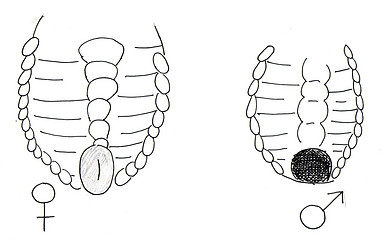
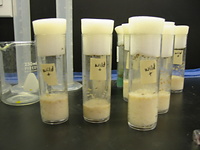
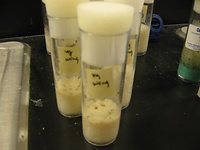
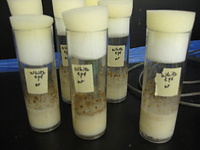





 Go to quick links
Go to quick search
Go to navigation for this section of the ToL site
Go to detailed links for the ToL site
Go to quick links
Go to quick search
Go to navigation for this section of the ToL site
Go to detailed links for the ToL site